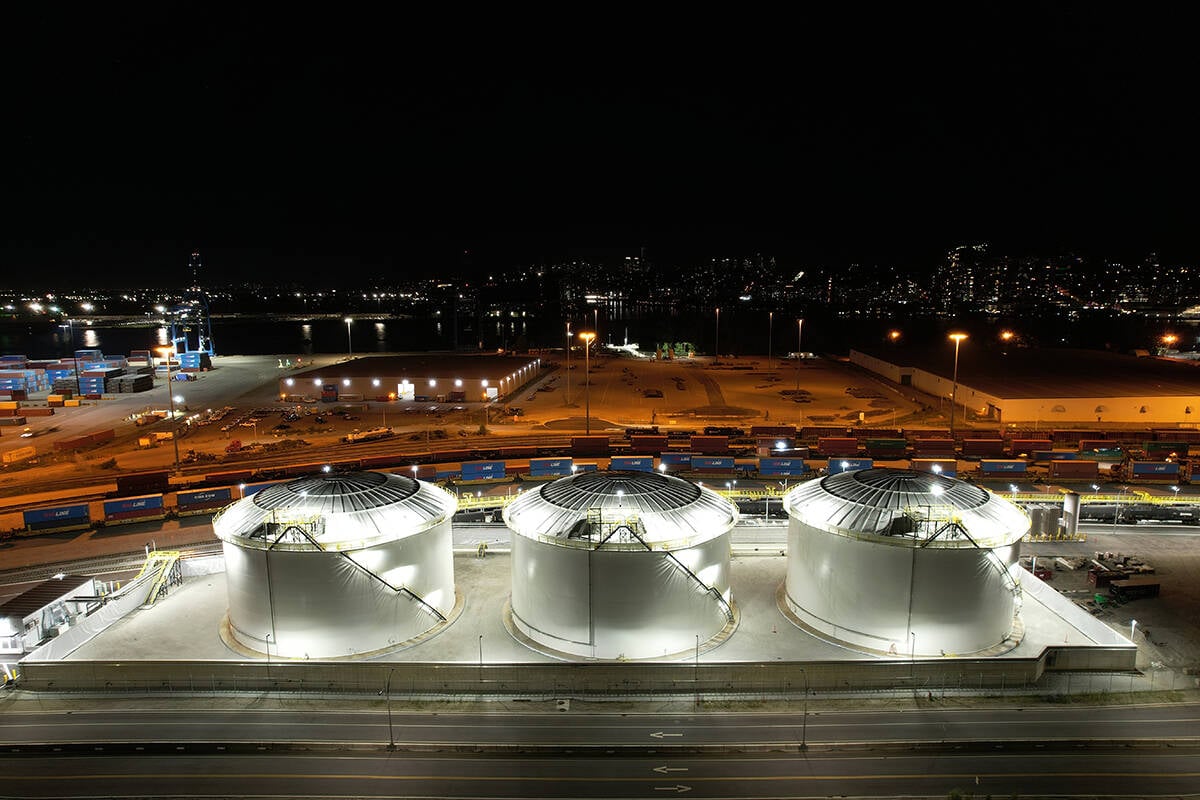A small slice of agriculture was recently lauded as a leader in a report on Canada’s science and innovation record that generally described lagging performance.
The Saskatchewan pulse industry was singled out for the creative use of check-off money to fund research on new varieties that keep the industry vibrant.
“The Saskatchewan Pulse Growers’ expenditures in R&D (research and development) as a percentage of the total of their investments have increased to 60 percent in the 2009-10 fiscal year,” wrote the authors of the Science, Technology and Innovation Council report released in Ottawa.
Read Also

Canola oil transloading facility opens
DP World just opened its new canola oil transload facility at the Port of Vancouver. It can ship one million tonnes of the commodity per year.
“These investments in innovation have ensured the competitiveness of Saskatchewan producers and profitability of the pulse industry as a whole.”
University of Saskatchewan president Peter MacKinnon, whose campus houses some of that research, is a key member of the council.
However, despite the agriculture industry’s assertion that research and innovation are the future of the sector, the report did not generally recognize it as much better than the rest of the Canadian economy, which in turn was said to be falling behind many of its international competitors.
Two leaders in the push for more Canadian agricultural innovation argue that priorities need to be improved.
“I do think we are lagging behind other jurisdictions,” said David Sparling, chair of agri-food innovation and regulation at the University of Western Ontario’s Richard Ivey School of Business.
“I don’t think Canada has done a good enough job making it attractive to invest in R&D in Canada, and that shows up in the lack of primary seed research and development we see here.”
David McInnes, president of the Canadian Agriculture Policy Institute, said a national government research funding council has dropped agriculture as one of its research priorities.
“Our point is that if Canada’s agrifood sector truly is a strategic asset, as we think it is, that can feed a growing hungry population, that can deliver more nutritious foods to different demographic sectors here and around the world and maintain sustainable practices in the face of climate change, then we feel agri-food research and development must be a priority,” he said.
The institute has been promoting creation of a national food policy that stresses innovation.
McInnes said there are pockets of innovation such as the Saskatchewan pulse example, but there is no systematic effort across the sector, and regulations often restrict or restrain research investment in innovation.
“If we don’t have a better regulatory environment vis–vis innovation, if we don’t harness the links between public and private sector, we won’t be able to attract dollars from the big companies,” he said.
Sparling said it is important in an era of a strong Canadian dollar that Canada find a way to gain the advantage by putting better products on the market.
He noted the long-held complaint that the food processing and manufactur ing industry has not been investing enough in new equipment and innovation. A significant portion of the industry has closed in recent years.
Sparling also said the continued resistance to research into genetically modified wheat and other varieties means the Canadian agricultural mainstay is attracting few research dollars.
He also suggested that Canada’s agriculture spending patterns remain skewed.
“Part of it is that we invest most of our agriculture dollars in business risk management programs, dealing with the aftermath of not being competitive as opposed to trying to be more competitive,” he said.
“BRM programs are important, but putting more emphasis on innovation and investment in the future and a little less on BRM probably would make sense if we are going to be competitive in the long term. That is not a popular opinion with producer groups.”
Other investment in pulse research:
SPG is currently funding 68 research projects with outstanding financial commitments of $17.5 million including:
•22 genetic improvement projects at $15 million
•23 processing and utilization projects at $1.2 million
•23 agronomy and sustainable production projects at $1.3 million
For every dollar SPG invests in research, there is a $20.19 return on investment to Saskatchewan producers. (Independent study done by Richard Gray at the University of Saskatchewan in 2008).
















